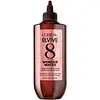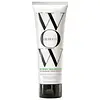What's inside
What's inside
 Key Ingredients
Key Ingredients

No key ingredients
 Benefits
Benefits

 Concerns
Concerns

 Ingredients Side-by-side
Ingredients Side-by-side

Propylene Glycol
HumectantAlcohol Denat.
AntimicrobialMyristyl Alcohol
EmollientWater
Skin ConditioningParfum
MaskingCI 14700
Cosmetic ColorantDicaprylyl Carbonate
EmollientCocos Nucifera Oil
MaskingTocopherol
AntioxidantSodium Benzoate
MaskingPaeonia Officinalis Flower Extract
TonicBehentrimonium Chloride
PreservativeEthylhexyl Salicylate
UV AbsorberBenzyl Alcohol
PerfumingBenzyl Salicylate
PerfumingLinalool
PerfumingIsopropyl Alcohol
SolventAlpha-Isomethyl Ionone
PerfumingGeraniol
PerfumingCetrimonium Chloride
AntimicrobialCitronellol
PerfumingPotassium Sorbate
PreservativeCitric Acid
BufferingHexyl Cinnamal
PerfumingGlycerin
HumectantPropylene Glycol, Alcohol Denat., Myristyl Alcohol, Water, Parfum, CI 14700, Dicaprylyl Carbonate, Cocos Nucifera Oil, Tocopherol, Sodium Benzoate, Paeonia Officinalis Flower Extract, Behentrimonium Chloride, Ethylhexyl Salicylate, Benzyl Alcohol, Benzyl Salicylate, Linalool, Isopropyl Alcohol, Alpha-Isomethyl Ionone, Geraniol, Cetrimonium Chloride, Citronellol, Potassium Sorbate, Citric Acid, Hexyl Cinnamal, Glycerin
Water
Skin ConditioningPropylene Glycol
HumectantPersea Gratissima Oil
Skin ConditioningPhenyl Trimethicone
Skin ConditioningGlycerin
HumectantIsostearyl Palmitate
EmollientGlyceryl Stearate
EmollientC12-15 Alkyl Benzoate
AntimicrobialEthylhexyl Salicylate
UV AbsorberSorbitan Oleate
EmulsifyingParfum
MaskingAcrylates/C10-30 Alkyl Acrylate Crosspolymer
Emulsion StabilisingMyristamidopropyl Pg-Dimonium Chloride Phosphate
Skin ConditioningAminomethyl Propanol
BufferingSteardimonium Hydroxypropyl Hydrolyzed Wheat Protein
Skin ConditioningPhenoxyethanol
PreservativeCaprylyl Glycol
EmollientEthylhexylglycerin
Skin ConditioningButylene Glycol
HumectantLinalool
PerfumingHexyl Cinnamal
PerfumingCitronellol
PerfumingWater, Propylene Glycol, Persea Gratissima Oil, Phenyl Trimethicone, Glycerin, Isostearyl Palmitate, Glyceryl Stearate, C12-15 Alkyl Benzoate, Ethylhexyl Salicylate, Sorbitan Oleate, Parfum, Acrylates/C10-30 Alkyl Acrylate Crosspolymer, Myristamidopropyl Pg-Dimonium Chloride Phosphate, Aminomethyl Propanol, Steardimonium Hydroxypropyl Hydrolyzed Wheat Protein, Phenoxyethanol, Caprylyl Glycol, Ethylhexylglycerin, Butylene Glycol, Linalool, Hexyl Cinnamal, Citronellol
 Reviews
Reviews

Ingredients Explained
These ingredients are found in both products.
Ingredients higher up in an ingredient list are typically present in a larger amount.
Citronellol is used to add fragrance/parfum to a product. It is often derived from plants such as roses. In fact, it can be found in many essential oils including geranium, lavender, neroli, and more. The scent of Citronellol is often described as "fresh, grassy, and citrus-like".
Since the Citronellol molecule is already unstable, Citronellol becomes irritating on the skin when exposed to air.
Citronellol is a modified terpene. Terpenes are unsaturated hydrocarbons found in plants. They make up the primary part of essential oils.
Citronellol is not able to be absorbed into deeper layers of the skin. It has low permeability,
Citronellol is also a natural insect repellent.
Learn more about CitronellolEthylhexyl Salicylate is an organic compound used to block UV rays. It primarily absorbs UVB rays but offers a small amount of UVA protection as well.
Commonly found in sunscreens, Ethylhexyl Salicylate is created from salicylic acid and 2-ethylhexanol. You might know salicylic acid as the effective acne fighter ingredient and BHA.
The ethylhexanol in this ingredient is a fatty alcohol and helps hydrate your skin, similar to oils. It is an emollient, which means it traps moisture into the skin.
According to manufacturers, Ethylhexyl Salicylate absorbs UV wavelength of 295-315 nm, with a peak absorption at 307-310 nm. UVA rays are linked to long term skin damage, such as hyperpigmentation. UVB rays emit more energy and are capable of damaging our DNA. UVB rays cause sunburn.
Learn more about Ethylhexyl SalicylateGlycerin is already naturally found in your skin. It helps moisturize and protect your skin.
A study from 2016 found glycerin to be more effective as a humectant than AHAs and hyaluronic acid.
As a humectant, it helps the skin stay hydrated by pulling moisture to your skin. The low molecular weight of glycerin allows it to pull moisture into the deeper layers of your skin.
Hydrated skin improves your skin barrier; Your skin barrier helps protect against irritants and bacteria.
Glycerin has also been found to have antimicrobial and antiviral properties. Due to these properties, glycerin is often used in wound and burn treatments.
In cosmetics, glycerin is usually derived from plants such as soybean or palm. However, it can also be sourced from animals, such as tallow or animal fat.
This ingredient is organic, colorless, odorless, and non-toxic.
Glycerin is the name for this ingredient in American English. British English uses Glycerol/Glycerine.
Learn more about GlycerinHexyl Cinnamal is a fragrance ingredient with a similar scent to jasmine. It can be naturally found in chamomile essential oil.
This ingredient is a known EU allergen and may sensitize the skin. The EU requires this ingredient to be listed separately on an ingredients list.
Hexyl Cinnamal is not water soluble but is soluble in oils.
Learn more about Hexyl CinnamalLinalool is a fragrance and helps add scent to products. It's derived from common plants such as cinnamon, mint, citrus, and lavender.
Like Limonene, this ingredient oxidizes when exposed to air. Oxidized linalool can cause allergies and skin sensitivity.
This ingredient has a scent that is floral, spicy tropical, and citrus-like.
Learn more about LinaloolParfum is a catch-all term for an ingredient or more that is used to give a scent to products.
Also called "fragrance", this ingredient can be a blend of hundreds of chemicals or plant oils. This means every product with "fragrance" or "parfum" in the ingredients list is a different mixture.
For instance, Habanolide is a proprietary trade name for a specific aroma chemical. When used as a fragrance ingredient in cosmetics, most aroma chemicals fall under the broad labeling category of “FRAGRANCE” or “PARFUM” according to EU and US regulations.
The term 'parfum' or 'fragrance' is not regulated in many countries. In many cases, it is up to the brand to define this term.
For instance, many brands choose to label themselves as "fragrance-free" because they are not using synthetic fragrances. However, their products may still contain ingredients such as essential oils that are considered a fragrance by INCI standards.
One example is Calendula flower extract. Calendula is an essential oil that still imparts a scent or 'fragrance'.
Depending on the blend, the ingredients in the mixture can cause allergies and sensitivities on the skin. Some ingredients that are known EU allergens include linalool and citronellol.
Parfum can also be used to mask or cover an unpleasant scent.
The bottom line is: not all fragrances/parfum/ingredients are created equally. If you are worried about fragrances, we recommend taking a closer look at an ingredient. And of course, we always recommend speaking with a professional.
Learn more about ParfumPropylene Glycol is an odorless, colorless liquid. As a humectant, it helps skin retain moisture. It also aids in delivering active ingredients.
Another role of this ingredient is preventing a product from melting or freezing. Propylene glycol also adds antimicrobrial properties to a product, elongating product lifespan.
This ingredient is considered an organic alcohol and commonly added into both cosmetics and foods.
Those with sensitive skin or conditions may develop a rash when using this ingredient.
Learn more about Propylene GlycolWater. It's the most common cosmetic ingredient of all. You'll usually see it at the top of ingredient lists, meaning that it makes up the largest part of the product.
So why is it so popular? Water most often acts as a solvent - this means that it helps dissolve other ingredients into the formulation.
You'll also recognize water as that liquid we all need to stay alive. If you see this, drink a glass of water. Stay hydrated!
Learn more about Water